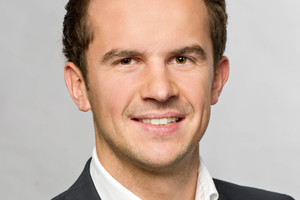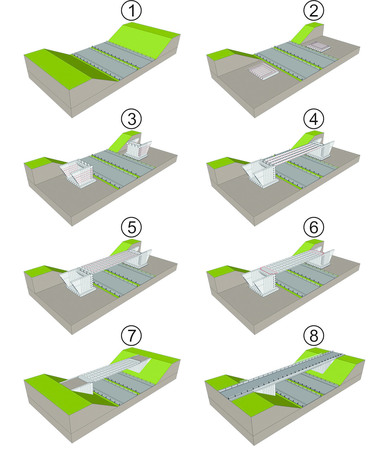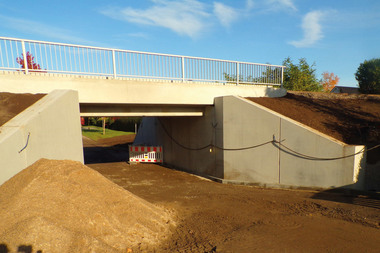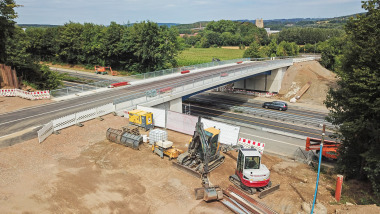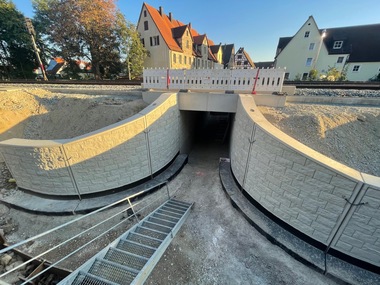State of the art in Germany and internationally
Generally speaking, the use of precast elements in bridge construction is a tried-and-tested method, which, in Germany, is usually restricted to combining structural precast elements with cast-in-situ infill concrete (with only a few exceptions). On an international scale, however, other bridge construction techniques such as the segmental method play a major role. Precast elements are used for simple overpasses as well as large bridges across valleys and long-spanning structures composed of several bridge sections. Precast methods provide a high degree of prefabrication and production under controlled factory conditions, which is why they lead to additional benefits in terms of efficient utilization and shorter construction times, for instance when designing new structures to replace existing bridges. Various options exist for producing innovative types of concrete, which can be self-compacting and/or textile-reinforced whilst providing greater durability or mechanical strength, or belonging in the ultra-high-performance category. Such concretes open up additional opportunities and new potentials for using precast elements in bridge construction. This paper initially refers to the use of precast elements both in Germany and on an international scale, primarily outlining design principles and fields of application in international bridge construction. Furthermore, this paper presents the knowledge and expertise gained to date as well as current trends. Reference will also be made to first examples of pioneering applications in Germany whilst discussing current developments and design considerations with a view to utilizing modern types of concrete, focusing on ultra-high-performance, fiber-reinforced concrete. In this context, this paper discusses related benefits and disadvantages as well as prerequisites and conditions for meaningful use. In addition, it presents experimental investigations into precast prestressed UHPFRC bridge components that are currently underway at the Chair of Concrete and Masonry Structures at TU Munich.


